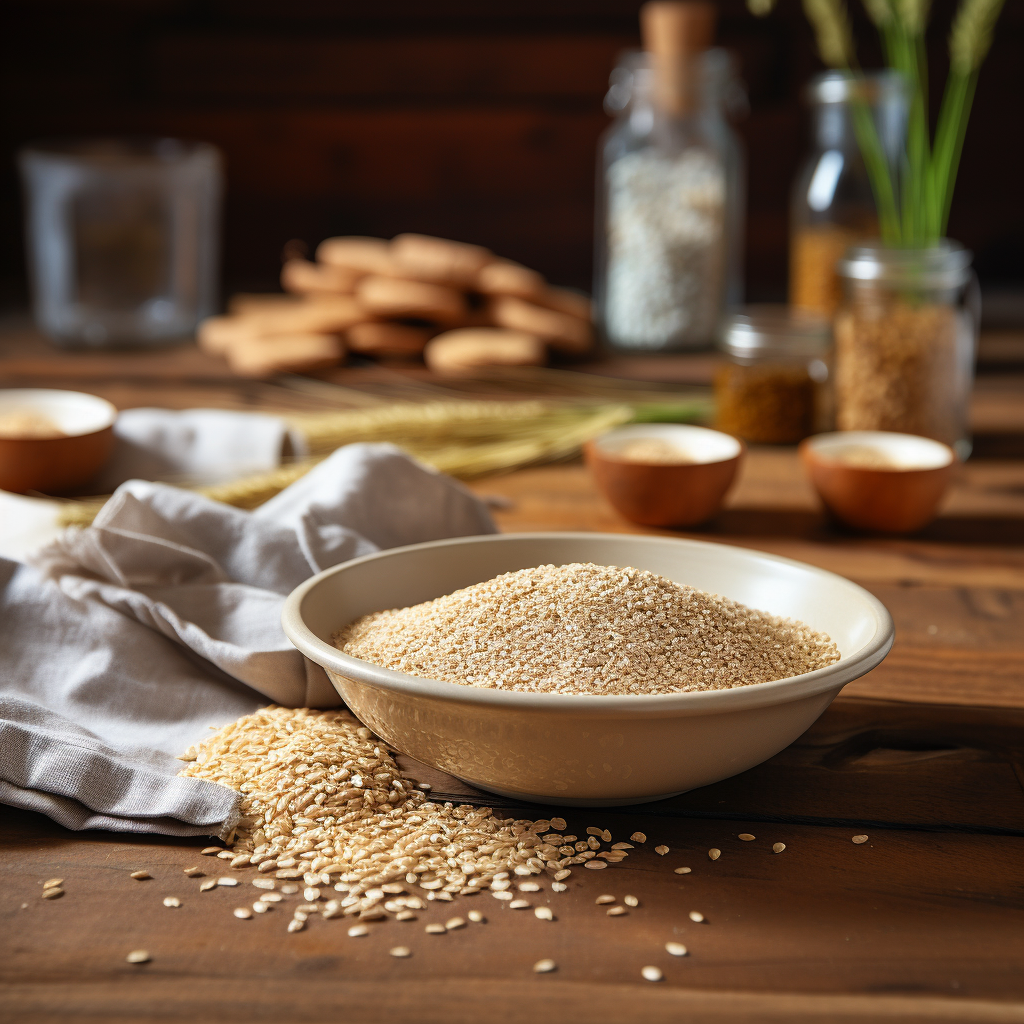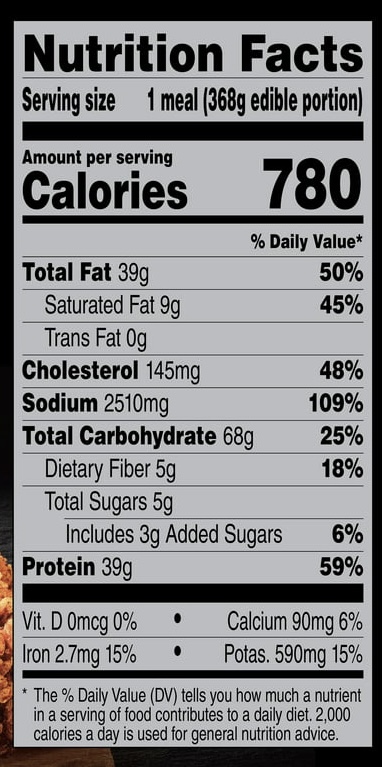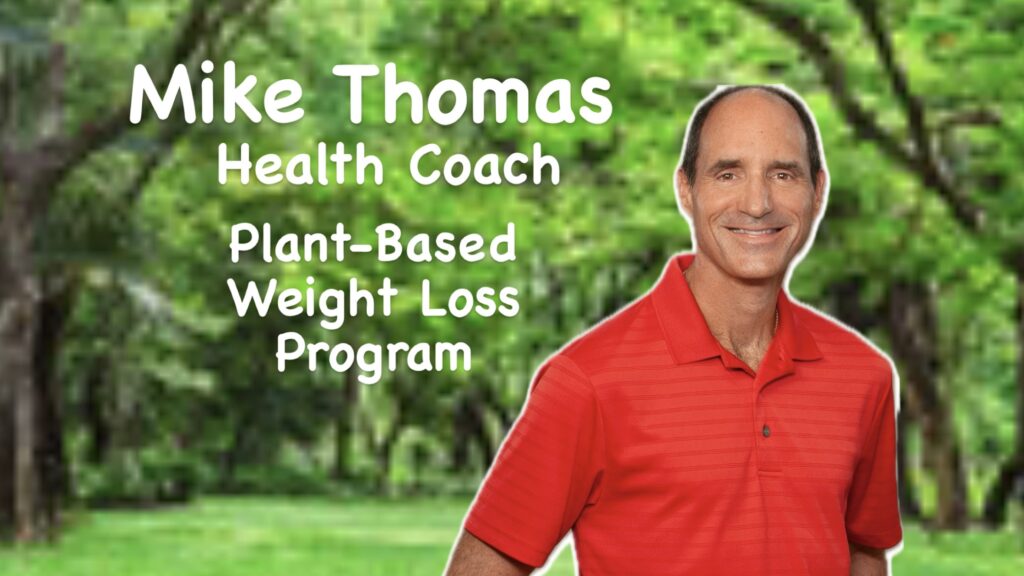By Mike Thomas, NBHWC February 8, 2024
In a world where fad diets and weight loss gimmicks constantly flood the market, it’s refreshing to focus on a tried-and-true approach that not only promotes sustainable weight loss but also offers a multitude of health benefits. The key to achieving this is a Whole Food Plant-Based (WFPB) diet that is low in fat. In this blog post, we’ll explore the remarkable benefits of adopting a low-fat WFPB diet, recognizing how it can help you shed excess pounds and potentially even combat chronic diseases like type 2 diabetes.
“The Fat You Eat Is The Fat You Wear” Dr. John McDougall

Dr. John McDougall is a well-known doctor and writer who supports a healthy eating plan. He believes in a diet that is low in fat and consists mainly of plant-based foods. He talks about how this kind of diet can be good for your health and help you lose weight. One of his famous sayings is, “The fat you eat is the fat you wear,” which means that if you eat a lot of fatty foods, your body is more likely to store extra fat.
To follow his advice, he suggests limiting the amount of fat you eat to 10% or less of your daily diet. This can make a big difference in your weight loss efforts. Dr. McDougall has also written a popular book called “The Starch Solution,” which promotes a diet that focuses on starch-rich foods and is low in fat. He believes that this type of diet can help you stay healthy, lose weight, and prevent diseases.
One interesting thing he recommends is eating plenty of potatoes, both regular and sweet potatoes. They are filling, nutritious, tasty, and provide energy. It’s worth noting that potatoes are very low in fat, with less than 1% fat content, making them almost fat-free.

The Science Behind Low-Fat WFPB Eating
Weight Loss
A low-fat WFPB diet is naturally lower in calories, which makes it an excellent choice for those looking to shed extra pounds. High-fiber foods like vegetables, fruits, whole grains, and legumes keep you feeling full and satisfied while providing essential nutrients. The reduction in calorie density, combined with the increased fiber intake, creates a perfect environment for steady and sustainable weight loss. This is not a diet however; it is a lifestyle. More energy, feeling full and getting vital nutrients are all a recipe for success.
Reversing Obesity

Obesity is a big health issue everywhere, causing many long-lasting illnesses. Luckily, a diet that’s low in fat and mainly made up of plant-based foods can help turn things around. When people eat less calorie-packed stuff and choose plant foods rich in nutrients, they can see impressive changes in their bodies.
Right now, only about 10% of the calories Americans get come from plants, while a whopping 72% of Americans are dealing with being overweight. This number used to be much smaller just 50 years ago. One of the big reasons for this is the fat we consume in our diets.
Potential Reversal of Chronic Diseases

Eating a low-fat whole-food plant-based diet isn’t just about losing weight; it’s also about making our overall health better. The high-fat foods we eat can be very harmful to us! Dr. Dean Ornish, through his groundbreaking research, has shown that by following a whole-food plant-based diet and making some changes in our lifestyle, we might actually be able to reverse heart disease. This same approach has proven to have the potential to turn around type 2 diabetes or at least make it much less severe.
Dr. Ornish has created an intense medical program focused on lifestyle changes that helps people in reversing heart disease. The good news is that Medicare and many insurance companies cover the cost of this program, which can be quite expensive. The not-so-good news is that you usually have to have had a heart attack or open-heart surgery to qualify for it. It would be amazing if we could prevent these terrible health problems that we often face in America. After all, heart disease is the number one cause of death in our country. It doesn’t have to be this way. A low-fat whole-food plant-based diet could be the solution to this top killer of heart disease.
Embracing Low-Fat WFPB Eating
Transitioning to a low-fat WFPB diet may seem daunting at first, but the benefits are worth the effort. Here are some essential steps to get you started:
1. Load Up on Fruits and Vegetables

Make fruits and vegetables the cornerstone of your meals. They are rich in essential nutrients, low in fat, and high in fiber, making them perfect for weight loss and overall health.
2. Choose Whole Grains

Opt for whole grains like brown rice, quinoa, and whole wheat bread over refined grains. They provide sustained energy and promote satiety.
3. Incorporate Legumes/Beans

Beans, lentils, and chickpeas are fantastic sources of plant-based protein and fiber. They can be the star of your meals or used as a side dish to increase satisfaction and keep you full.
4. Limit High-Fat Foods
While nuts and avocados are nutritious, they can be calorie-dense. Use them sparingly if weight loss is your primary goal.
5. Avoid Processed Foods with Added Oils
Processed foods often contain hidden oils that can sabotage your low-fat efforts. Read labels carefully and opt for whole, unprocessed foods whenever possible.

6. Seek Support
Starting a new diet can be tough, but you don’t have to do it all by yourself. Think about getting help from a health coach, especially one who specializes in whole-food plant-based (WFPB) eating, like me. A coach can assist you along the way and give you personalized advice to make it easier. Even having a friend to keep you accountable can make a big difference!
Recently, I hosted a Zoom meeting with a group of people to talk about the challenges of eating too much fat and why it’s important to address this issue. We also discussed ways to cut down on excess fat in our diets. You’re welcome to check out the video of our discussion to see how getting support can be beneficial. Free e-mail coaching for March is provided with this video. See video description for more details.
Take the First Step Towards a Healthier You
The path to better health and sustainable weight loss begins with your plate. By embracing a low-fat Whole Food Plant-Based diet, you can get rid of the excess fat that’s been holding you back. Remember, it’s not just about losing weight; it’s about transforming your life and reducing your risk of chronic diseases.
If you’re interested in learning more about WFPB eating or if you’d like personalized coaching to kickstart your journey, don’t hesitate to reach out to me. Together, we can make your health goals a reality. Let’s embark on this exciting journey towards a healthier, happier you!
Contact Me for Personalized Guidance
If you’re ready to take control of your health and explore the benefits of a low-fat WFPB diet, I’m here to help. Contact me today to schedule a consultation and start your journey towards a healthier, happier you. Your future self will thank you!
Lastly, here is a LINK with several low-fat WFPB recipes which are easy to make and delicious!
Consider doing an “experiment” for a few weeks to see if you feel any differently. My guess is you will be pleasantly surprised.
God Bless,
Mike
Learn More about Mike:

This blog is for educational and informational purposes only and solely as a self-help tool for your own use. I am not providing medical, psychological, or nutrition therapy advice. You should not use this information to diagnose or treat any health problems or illnesses without consulting your own medical practitioner. Always seek the advice of your own medical practitioner and/or mental health provider about your specific health situation. For my full Disclaimer, please go to CoachMikeThomas.com.
